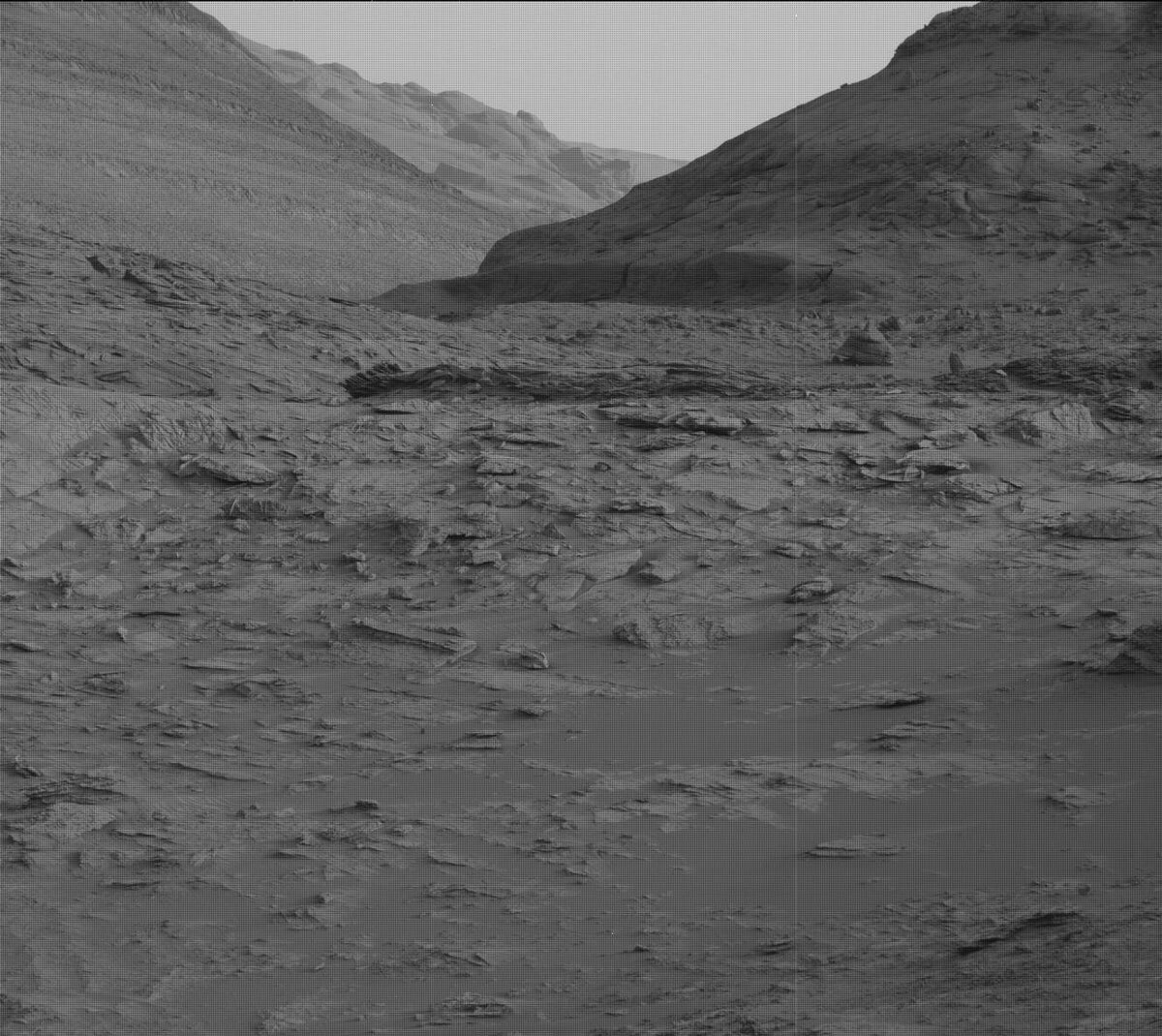3 min read

Our intrepid rover engineers again successfully navigated Curiosity a little higher up Mount Sharp (~5 m) and ~40 m on the ground, away from our previous location. The terrain beneath the rover included striated, dusty bedrock and sand ripples with coarse lag deposits. As a member of the geology/mineralogy planning team and the APXS payload uplink lead today, I chose several interesting areas in the workspace for potential arm, contact science. The rover engineers assessed these targets before we settled on a representative bedrock area. We are planning two APXS observations on the dusty bedrock, and on a brushed area, with accompanying MAHLI images (“Pitinga”). This will help us assess the effect of the ubiquitous dust cover on APXS compositional analyses of the bedrock. The measurement of the brushed bedrock also constitutes part of our systematic monitoring of bedrock composition with APXS every 10 m of elevation gain, as we climb Mount Sharp. This is important as we are in a region identified from orbit as showing a change in mineralogy and potentially environment within Gale crater. The brushed target will be imaged with Mastcam, which will also image the two rock targets being analyzed with ChemCam LIBS: “Rio Pipi” – dusty bedrock in the ground, and “Barama” – layered bedrock face; as well as some crevices within the sand and rock in the workspace.
Looking beyond the immediate workspace, the view ahead is mesmerizing with interesting textures and structures both in the near- and far-field (see the image above). Mastcam and CCAM RMI will image the platy, darker, layered ledge in the middle of the image in more detail, but offset to the right (”Dukwari”). Mastcam will also image a cliff off to the right of the rover to document textures, structures and layering (“Cantarrana”). Once Curiosity has executed all the targeted science observations, the rover engineers are planning a drive towards the lip, off to the middle-left of the Mastcam image. That should afford us a better view to plan upcoming drives as we continue climbing Mount Sharp.
The environmental scientists planned several observations to continue monitoring changes in atmospheric conditions and the current dust storm within Gale crater. These included: Navcam line of sight images, a large dust devil survey, suprahorizon movies, a dust devil movie, and a zenith movie; and Mastcam basic and full tau observations. After our hopefully successful drive, we will image the terrain beneath the rover wheels with MARDI. The SAM instrument will also be running a fake handoff and a blank solid sample evolved gas experiment. Standard REMS, DAN and RAD activities round out this plan.
Written by Lucy Thompson, Planetary Geologist at University of New Brunswick







